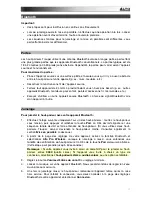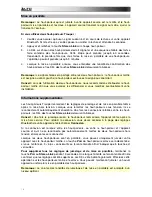
3
Example 2: One Trouper loudspeaker system with vocal microphone and guitar with
active pickup:
Example 3: Two Trouper loudspeaker systems with remote mixer, DJ controller, etc.:
Connect a dynamic microphone to the
Ch. 1
Input
using an XLR or 1/4" (6.35 mm) TRS
cable. Connect a guitar with an active pickup
to the
Ch. 2 Input
using a 1/4" (6.35 mm) TS
cable.
Note:
When using the Trouper loudspeaker
system with a guitar, we recommend using
one with
active
pickups rather than passive
pickups. If you use a guitar with passive
pickups, connect it to an external preamp or
direct input (DI) box, and connect the line-
level output to the loudspeaker.
We recommend using dynamic microphones
with the Trouper loudspeaker rather than
condenser microphones. If you use a
microphone that re48V of phantom
power, you must connect it to an external
phantom power supply. Trouper does not
supply any phantom power.
Microphone
Acoustic guitar
with active pickup
Power
Power
DJ controller,
mixer, etc.
Connect the left and right output of your DJ
mixer, controller, etc. to
Ch. 1
Input
of each
loudspeaker system using XLR or 1/4" (6.35
mm) TRS cables.
Tip:
To send the same mix to both Trouper
loudspeakers, connect both channels of your
DJ mixer, controller, etc. to the
Ch. 1
and
Ch.
2 Inputs
of one loudspeaker, and then connect
that loudspeaker's
Link Output
to the
Ch. 1
Input
of the other loudspeaker. Both Trouper
loudspeaker systems will then play identical
summed mono mixes.
Summary of Contents for Trouper
Page 39: ......




































